Shearwater’s latest album Jet Plane and Oxbow is a nearly cinematic experience that explores themes of personal and social upheaval, technology and the advent of the digital age.
In an age of streaming and singles, the album is a rarity that offers a sense of completeness, much like concept albums from ‘80s innovators David Bowie, Brian Eno, Talking Heads, Peter Gabriel and The The, and incorporates a range of analog synths and acoustic drums that contributed to the sonic palette of that era. It is slated for official release on January 22, 2016.
“I made a record that in some ways to me does feel quite tense,” says Jonathan Meiburg, songwriter and band leader. “At the same time, it's also really fun.”
In this exclusive and revealing interview, Meiburg discusses the motivations, concepts and sounds behind the recording, his wide-ranging musical influences and, of course, the gear that he used to create it, including Eventide 949 and H3000 Harmonizers, the Korg Lambda, ARP Solina String Synth, Vocoder, and an array of oddball pedals and recording techniques.
Livin’ in the ‘80s
Why do you think this '80s sound, with these pre-digital synths and aggressive polyrhythms are back in vogue?
I can only speak for myself; that was a time I barely remember. I remember Reagan getting elected and John Lennon being shot, but I was four. So this stuff is back in my almost preconscious memory. That time seems very analogous to the time that we're in now. There was a sense that the technological world was going to change everything about our lives, but nobody really knew quite what that was going to look like. Now we're in almost exactly the same kind of moment.
In the last decade, in our social, political and artistic lives, there has been so much upheaval as a result of the Internet and digital technology. In the ‘80s, the Cold War was still going on, and now Russia is back as this looming international force to be reckoned with. There was a feeling of both great optimism but also terrible dread. I think both of those things are really coming through right now. But all of this is really secondary to you enjoying the record.
It really feels like a complete album, as opposed to a collection of songs. Tell me about the inspiration and the motivations for these songs and how these themes came together.
All of the Shearwater records have that quality about them. I'll start with a single or two, a title or an idea, and then the rest of the record will somehow crystalize around that. In this case, I had the title early on in the process. I was flying back from Austin to New York and I looked out the window of the airplane and I saw one of those big oxbow lakes that comes off the Mississippi River. It's almost a perfect loop, like the ghost of the old river. Then this other plane was going the other direction and passed right through the center of it while I was looking down. Those two images juxtaposed, between this really modern technological creation and this ancient landform, together, seemed like a good place to start.
The drums and the fuzz bass make for very rocking songs, even in the relative absence of guitars. Are you writing on keyboard or guitars?
More and more, I write in my head. Often I'll come up with a melody line or a rhythm or something, then I'll come back and play it on whatever instrument is available or sing it into my phone. But the song we used for the single "Quiet Americans," I had in my head and had never played it until we made the original demo for it in Austin, which we built on until it was the actual song.
One of the tricks we used was doing direct guitars through a set of pedals, rather than going through an amp. We were just smashing it with a [ZVEX] Mastotron and a strange tremolo thing called a Goatkeeper, from Lightfoot Labs. It’s a series of four tremolos that you can put in sequence. You can also alter the waveform and change which beats of the measure it drops out on, and you can feed it a click.
Once the tempo is set from an external source, you can make sure that your tremolo is always synced up exactly to that tempo. But then you can carve certain beats out of a tempo within the pedal. You can get a lot of complicated sounding effects really fast. The pulse underneath that song was made by using the overdriven guitar through that pedal.
Then you used a giant concrete tube buried under the house!
Yeah! Jim Eno, who plays drums for Spoon, runs a studio in Austin called Public Hi-Fi. A tree fell on his house and he had to rebuild it, so he actually put this big concrete culvert underneath the house and he mic’d it up and put a speaker in there. It's nearly useless as a regular reverb, but it's a very strange sounding and we used it on a couple of things on the record where it had to sound unlike anything else.
What kind of sequencer did you use on the bass line for “Quiet Americans” or the chords on “Wildlife in America”?
We didn't use any sequencers at all. The pulses that you hear were generated using the Goatkeeper. I really don't like programming stuff in. The first thing you hear in “Prime,” that: do do do do do do do … That's just me playing on the Korg Lambda. Playing anything that's that regular, you have to work to get it right, especially if you want it to sound mechanical, but not entirely mechanical.
We wanted to make a record that seems like it was made in about 1980; we were aiming more for that kind of aesthetic. It was an era when digital devices were new, but it was pre-MIDI, so sequences hadn't really taken hold. I wanted to make sure that even if a song sounded somewhat mechanical, that it also sounded alive. Even on songs where the drum part is the same over and over, the drummer played a complete performance. When you're making something that's very repetitive, the tiny variations start to become really important. They keep you from getting bored.
Do you do a lot of processing on the synth or do you record them directly?
We usually use pedals to do the processing right when we're going in. I like stuff to sound the way it did when we recorded it. The problem with recording these days is it's so easy to defer all of your decisions. Some of these songs, even with that approach, pile up into the hundreds of tracks, so it was important to make as many decisions as we could at the outset. Otherwise, we'd still be working on the record. Ultimately the money runs out, so that's always good for focusing your mind.
Powers of 10
I read prior to our conversation about the circularity of the album. It starts with what's presumably the protagonist ...
Well, it's not like Pink Floyd The Wall, but I wanted to start very close in with that image: You're lying on your back in the grass counting backward.
By the end of the record, it's like the field of view just zooms out, and out, and out, until it's like you're looking at the earth from space. That last song is really kind of cosmic sounding. Did you ever see that film “Powers of Ten”?
It's a film that was made for IBM back in the '70s. It starts with an image of a couple lying on a picnic blanket. Then it zooms out by successive powers of 10 of magnification until you're looking at a cluster of galaxies. Then it goes back the other direction, going all the back to the molecular realm. This is all without computer graphics. It's fascinating. It's a classic. You won't regret it. It's worth spending ten minutes on that.
The drumming is fantastic, especially on “Filament.”
That one was a complete afterthought. We'd been working on “Prime” for hours and, because that's such a complicated percussion arrangement, we just wanted to loosen up. I just started playing that bass line; Cully [Symington] was playing the drums. We played it for seven or eight minutes and stopped. I came back to it later and thought there really is something to this. I kept getting excited every time I heard it, so we started making a song out of it.
It reminded me of Talking Heads’ Fear of Music and Remain in Light.
Those are really the two. Remain in Light is wonderful in the way that it sits right at that divide between the digital and analog world. You hear in it a time before all of these sounds were rote. There's an excitement and a sort of adventurousness in that record that I really love. Nothing about it sounds dated. There's so much music that was made not long after that is painful to listen to.
Brian Eno is such a master of texture and depth in his recordings. You can almost always tell when he's worked on something. That was something I wanted to pursue; I wanted to make a record that was fairly straight forward melodically, but texturally very complex and quite deep. So you can enjoy it when you first listen to it, but if you keep coming back to it, even 20 or 30 listens in, you would still have things to discover.
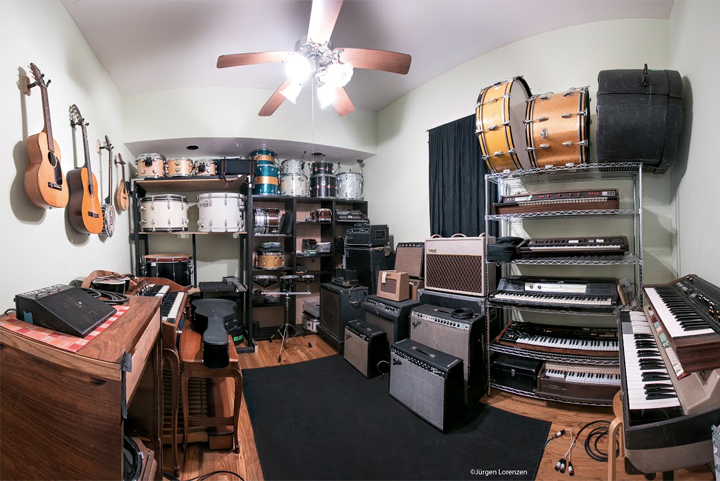
(right) Shelf of keyboards (from top down): Arp Solina, Korg Lambda, Wurlitzer 200, Juno 60
(far right) Yamaha SK15 sits on top of a Farfisa Compact
You’ve done several collaborations with Danny Reisch; do you walk into his studio knowing exactly what you're going to do when you record, or is it looser?
I would not say that any point in making this record felt relaxed. We were really running full tilt, trying to get as much done as we could with the time we had. Danny and I aren't very relaxed people. We really enjoy getting stuff done. There was a real sense of urgency and intentionality to making this record. But we also took long stretches of time when we weren't working on it, which was mostly an accident but turned out to be a good thing. I decided when I wasn't working on the record, I wasn't going to think about it. I didn't listen to rough mixes. I didn't take any of it home. I was only working on it when we were working on it. That helps.
“Filament” is so groove-based. It sounds like it was conceived out of a jam. Do you work with drum machines or loopers when you're writing?
No. I don't want to make too many decisions for the drummer. At the outset I'll give him a very basic outline of what kind of rhythm or beat that I have in mind. Cully, who we worked with on the last couple of records, is such an ace. He'll come up with something that's better than what I had in mind anyway. Danny is also a drummer. He also drummed for us on the last couple of tours. I'm in really good hands with those two. I can really just give them suggestions and then step back.
The drum sounds are so diverse across the record. Is that something you envisioned beforehand, or did it develop as the songs progressed?
It’s in keeping with that early 1980s feeling. There were some records that I was listening to: Scary Monsters, the drums are just super bizarre on that record, or some of Eno's other stuff around that time. We wanted to use Rototoms, so we put some fiber-skin heads on and used those on a couple of songs. We were just delighted with how well those recorded. I don't know if we're going to be able to bring those with us when we're touring, but they're perfect for the sound that we got. We wanted to take a cue from Peter Gabriel Three and try to use as few cymbals as we possibly could. It frees up so much room for you to do other things in the really high frequencies, which is part of what we did with Brian Reitzell, who's out in Los Angeles.
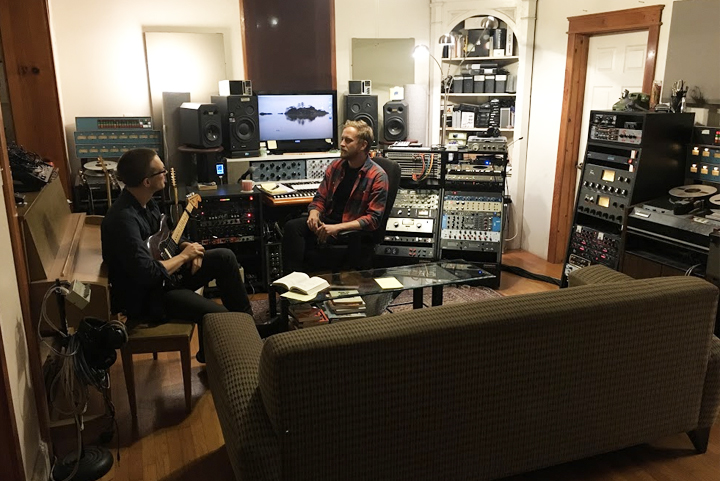
Music for Films
I listened to Jet Plane And Oxbow on headphones and it has a really cinematic quality.
Part of that is Brian's influence. I wanted it to be an almost visual experience. In addition to being a great film composer, producer and musician, he’s a drummer. A lot of what we did with him, other than the processing stuff, was to have him go in and make percussion overdubs. You'll hear a lot of higher-end percussion stuff is filled in with various shakers and little tiny sounds.
Brian works on TV soundtracks; his most recent big project was the show “Hannibal.” He mixed these soundscapes that have a lot of information in the low end, and a lot of information in the high end. Then there's this big space in the middle, which makes sense because that's where all the dialogue is. As long as he’s not stepping on those frequencies, he's free to keep on making music through all the scenes. The director or showrunner of that series wanted music through entire episodes sometimes. Brian would make 40 or 45 minutes of music every week for that show from scratch.
Let’s talk gear. What kind of synths did you use on the record?
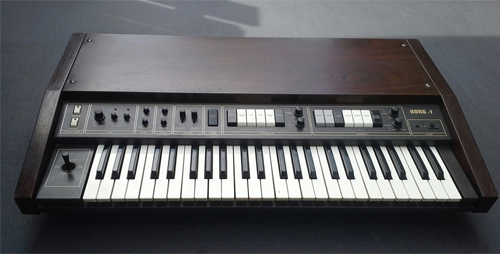
We really wanted to work gear from the era we were talking about. Original Eventide Harmonizers, we used a bunch. That Korg Lambda, which is a beautiful and underrated synthesizer, made in 1980. We used it a ton. It's the first sound you hear on the record and it's hidden all over the place. I'm not quite sure what they were thinking when they made this keyboard. It's very unassuming, it looks like a little electronic organ. It has a big wooden surface so that you can put something else on top of it. They must have been trying to make a synthesizer that didn't look intimidating. It has all of these organ switches on it that say "brass," "voice," "organ" and things like that. It's a beautiful synth that makes really musical sounds. I loved it.
You have a Vocoder on the album as well.
We used that just a little bit. I'd actually like to use one more often and not necessarily for the robot voice, which is the most boring thing you can do with a Vocoder. What's interesting about it to me is all the different voice-like sounds you can make with it that are not words. If I had gotten to spend a little more time with the Vocoder, I could have made a really cool solo out of it. You never would have known it was a voice.
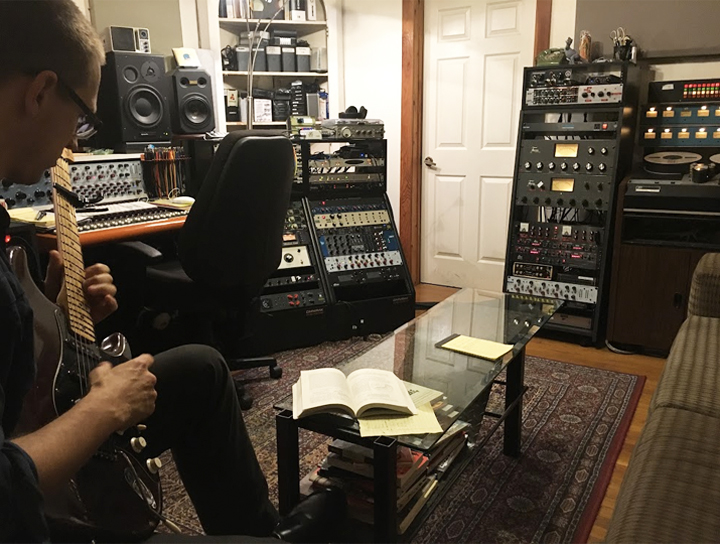
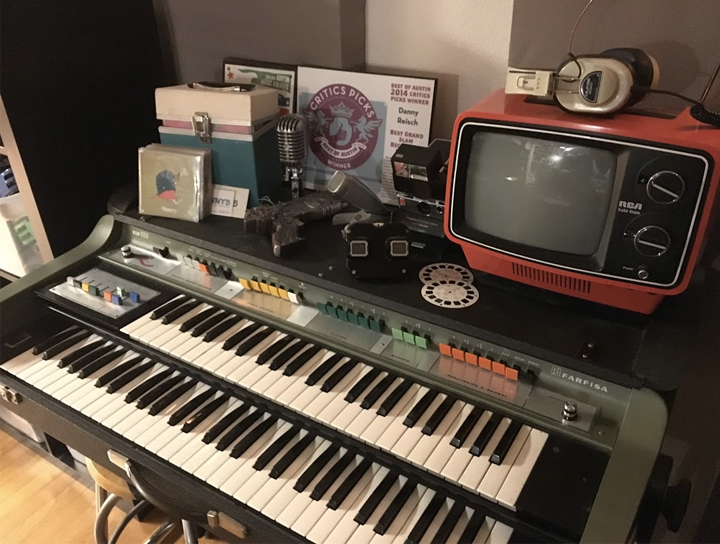
Is that what I hear at the end of “Filaments” that sounds like an oboe?
That's not the Vocoder. It's actually the Strat I was playing with an Ebow, then overloaded through a couple of pedals; the signal was just destroyed. Somehow when I played that one note, we'd tortured the sound so much it’s almost impossible to distinguish it from an oboe or a bassoon. But then it starts to drift and sounds like this tortured electronic sound. That was probably one of my favorite sounds on the whole record. It was a thrill to make that one. And that was just an accident.
Another one we loved was using the ARP Solina String Synth. We took the vibrato off of it and used it almost like a sine wave generator, but there was something more to it somehow. We ran that through a two-tape delay and then this Master Room spring echo, which is from the '80s. I manipulated the tone control on it slightly so it faded in this slightly icky and very compelling way. It's the last sound you hear on the record, that: “waaaaaaaaaaaaaaaa.” That's the ARP. That's what you think of as the Pink Floyd string synthesizer. They look really kind of funny and cheap. They're really more of a kind of a mid-to-late '70s thing.
Everything else, whatever my intentions were for making it, or the gear that I used to make it, that might be of interest to people who are reading Reverb, you shouldn't hear my struggle when you listen to the record. Hopefully what we've made is something that you can just sit and enjoy.

